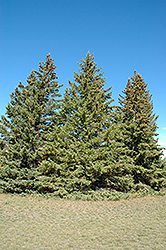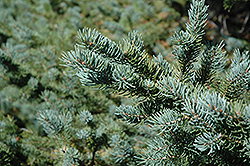Plant Library
* This is a "special order" plant - contact store for details
Height: 60 feet
Spread: 20 feet
Sunlight:
![]()
Hardiness Zone: 2a
Description:
The hardiest of the landscape spruces, tall and stately with bluish-green needles; very tough and adaptable to all kinds of soils except those that are permanently wet, makes a stunning vertical accent in the larger home landscape or a fine windbreak
Ornamental Features
White Spruce is primarily valued in the landscape for its distinctively pyramidal habit of growth. It has bluish-green evergreen foliage which emerges light green in spring. The needles remain bluish-green throughout the winter. The smooth gray bark adds an interesting dimension to the landscape.
Landscape Attributes
White Spruce is a dense evergreen tree with a strong central leader and a distinctive and refined pyramidal form. Its relatively fine texture sets it apart from other landscape plants with less refined foliage.
This is a relatively low maintenance tree. When pruning is necessary, it is recommended to only trim back the new growth of the current season, other than to remove any dieback. It has no significant negative characteristics.
White Spruce is recommended for the following landscape applications;
- Vertical Accent
- Windbreaks and Shelterbelts
Planting & Growing
White Spruce will grow to be about 60 feet tall at maturity, with a spread of 20 feet. It has a low canopy, and should not be planted underneath power lines. It grows at a medium rate, and under ideal conditions can be expected to live for 70 years or more.
This tree should only be grown in full sunlight. It is very adaptable to both dry and moist locations, and should do just fine under average home landscape conditions. It is considered to be drought-tolerant, and thus makes an ideal choice for xeriscaping or the moisture-conserving landscape. It is not particular as to soil type or pH, and is able to handle environmental salt. It is somewhat tolerant of urban pollution. This species is native to parts of North America.
* This is a "special order" plant - contact store for details



